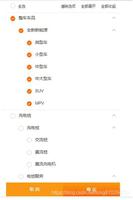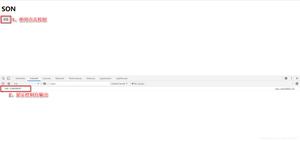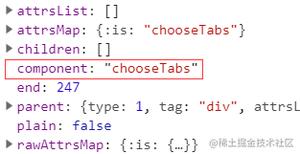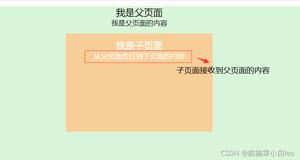Vue组件跨层级获取组件操作
this.$parent 访问父实例
this.$children 当前实例的直接子组件。(不保证顺序,不是响应式)
this.$parent.$parent.$refs.xxx 跨级访问父组件
this.$children.$children.$refs.xxx 跨级访问子组件
这种递归的方式 代码繁琐 性能低效
ref
只能获取当前组件上下文组件 无法跨层级
ref 是字符串 被用来给元素或子组件注册引用信息。
引用信息将会注册在父组件的 $refs 对象上。
如果在普通的 DOM 元素上使用,引用指向的就是 DOM 元素;
如果用在子组件上,引用就指向组件实例
<!-- vm.$refs.p/this.$refs.p 获取DOM node -->
<p ref="p">hello</p>
<!-- vm.$refs.child/this.$refs.child 获取组件实例 -->
<child-component ref="child"></child-component>
注:
因为 ref 本身是作为渲染结果被创建的,在初始渲染的时候你不能访问它们,它们还不存在
$refs 不是响应式的,因此你不应该试图用它在模板中做数据绑定。
这仅作为一个用于直接操作子组件的“逃生舱”——你应该避免在模板或计算属性中访问 $refs。
当 ref 和 v-for 一起使用的时候,你得到的引用将会是一个包含了对应数据源的这些子组件的数组。
如何优雅的获取跨层级实例 ?
1、npm install vue-ref || yarn add vue-ref 安装vue-ref插件
2、导入import ref from "vue-ref"
3、使用插件Vue.use(ref, { name: "ant-ref" });name是给插件起名
插件使用方法
//使用`provide` 在根组件提供数据
provide() {
return {
//主动通知 将组件实例绑定在根组件上
setChildrenRef: (name, ref) => {
this[name] = ref;
},
//主动获取 获取绑定的组件
getChildrenRef: name => {
return this[name];
},
// 获取根组件
getRef: () => {
return this;
}
}
}
// 使用`inject` 在子组件中注入数据
inject: {
setChildrenRef: {
default: () => {}
},
getParentRef: {
from: "getRef",
default: () => {}
},
getParentChildrenRef: {
from: "getChildrenRef",
default: () => {}
}
}
//使用指令注册子组件
<ChildrenH v-ant-ref="c => setChildrenRef('childrenH', c)" />
//使用指令注册DOM元素
<h3 v-ant-ref="c => setChildrenRef('childrenE', c)">E 结点</h3>
//获取根组件实例
this.getParentRef()
//获取指定名称组件实例
this.getParentChildrenRef("childrenH")
//这里输出的事DOM
this.getParentChildrenRef("childrenE")
vue-ref插件源码
"use strict";
Object.defineProperty(exports, "__esModule", {
value: true
});
exports.default = {
install: function install(Vue) {
var options = arguments.length > 1 && arguments[1] !== undefined ? arguments[1] : {};
var directiveName = options.name || 'ref';
console.log(arguments)
Vue.directive(directiveName, {
bind: function bind(el, binding, vnode) {
//自定义指令传入值 是函数, 在这里执行 传入组件实例
binding.value(vnode.componentInstance || el, vnode.key); //vnode.key 是使用插件时起的名称
},
update: function update(el, binding, vnode, oldVnode) {
if (oldVnode.data && oldVnode.data.directives) {
var oldBinding = oldVnode.data.directives.find(function (directive) {
var name = directive.name;
return name === directiveName;
});
if (oldBinding && oldBinding.value !== binding.value) {
oldBinding && oldBinding.value(null, oldVnode.key);
// 如果指令绑定的值有变化,则更新 组件实例
binding.value(vnode.componentInstance || el, vnode.key);
return;
}
}
// Should not have this situation
if (vnode.componentInstance !== oldVnode.componentInstance || vnode.elm !== oldVnode.elm) {
binding.value(vnode.componentInstance || el, vnode.key);
}
},
unbind: function unbind(el, binding, vnode) {
binding.value(null, vnode.key);
}
});
}
};
补充知识:vue项目中z-index不起作用(将vue实例挂在到window上面)
问题描述:由于原有项目(传统项目)中嵌入新的vue组件,dialog弹出框的z-index:999999;任然不起作用;
解决办法:将vue实例挂载到window
解决代码如下:
入口文件index.js中
import Index from './components/index.vue'
import './index.pcss'
function install (Vue) {
Vue.component('gys-index-list', Index)
}
if (typeof window !== 'undefined' && window.Vue) {
install(window.Vue)
}
在父组件中正确引入压缩后的css文件+js文件(这里截图的父组件是html文件)

将元素添加到body上面(解决z-index不起作用,前面内容只是铺垫)

总结描述:由于项目版本的迭代,需要将新的项目(使用的vue框架)嵌入到原有的传统的html文件项目中,控制台提示找不到vue组件。除了正确引入vue实例外,需要查看NGINX配置是否正确
以上这篇Vue组件跨层级获取组件操作就是小编分享给大家的全部内容了,希望能给大家一个参考,也希望大家多多支持。
以上是 Vue组件跨层级获取组件操作 的全部内容, 来源链接: utcz.com/p/237660.html









